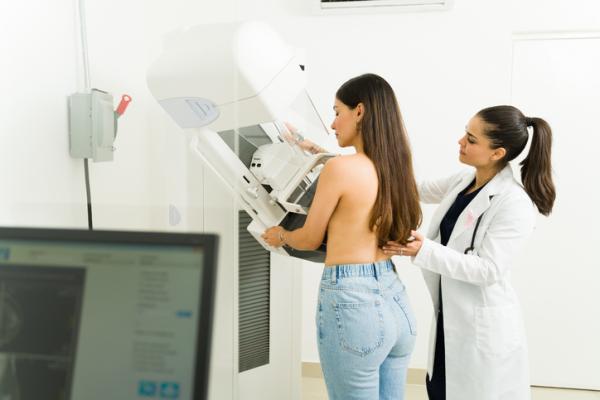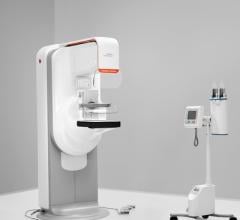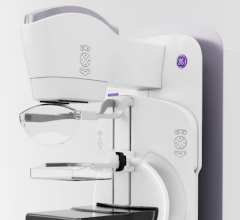
Getty Images
January 29, 2024 — Diagnoses of breast cancer have increased steadily in women under age 50 over the past two decades, with steeper increases in more recent years, according to a study led by researchers at Washington University School of Medicine in St. Louis. The surge is driven largely by increases in the number of women diagnosed with estrogen-receptor positive tumors, cancerous growths fueled by estrogen.
While overall trends show increases, however, some decreases have occurred in specific tumor types and among specific groups of women. Such changes in disease rates in young women observed over time — analyzed by age, race, tumor type, tumor stage and other characteristics — may offer clues to possible prevention strategies.
The study is published Jan. 26 in JAMA Network Open.
“For most women, regular breast cancer screening does not begin until at least age 40, so younger women diagnosed with breast cancer tend to have later-stage tumors, when the disease is more advanced and more difficult to treat,” said senior author Adetunji T. Toriola, MD, PhD, a professor of surgery and co-leader of the Cancer Prevention and Control Program at Siteman Cancer Center, based at Barnes-Jewish Hospital and Washington University School of Medicine. “This research offers a way to begin identifying the factors driving these increasing rates, with the goal of finding ways to slow or reverse them. It also could help identify young women who are at high risk of developing early-onset breast cancer, so that we can design interventions to evaluate in clinical trials to see if we can lower that risk.”
The research team analyzed data from over 217,000 U.S. women diagnosed with any type of breast cancer from 2000 through 2019. In 2000, the incidence of breast cancer among women ages 20 to 49 was about 64 cases per 100,000 people. Over the next 16 years, that rate slowly went up, increasing at about 0.24% per year. By 2016, the rate had reached about 66 cases per 100,000. But after 2016, for reasons researchers do not yet understand, the trend line made a steep uphill turn, suddenly increasing at 3.76% per year. By 2019 — only three years later — the rate had reached 74 cases per 100,000.
An additional intriguing aspect of the data is that the increase in breast cancer incidence is due almost entirely to an increase in tumors that are estrogen-receptor positive, according to Toriola, who is also a William H. Danforth Washington University Physician-Scientist Scholar. These tumors have proteins on their surfaces that bind to estrogen, which fuels tumor growth. In fact, the incidence of tumors without the estrogen receptor decreased over the 20 years of data analyzed in the study.
“We need to understand what is driving the specific increase in estrogen-receptor positive tumors,” Toriola said. “We also hope to learn from the decrease in estrogen-receptor negative tumors. If we can understand what is driving that rate down, perhaps we can apply it in efforts to reduce or prevent other breast tumor types.”
The researchers also found higher rates of breast cancer among Black women, especially among those ages 20 to 29. Black women in this age group have a 53% increased risk of breast cancer compared with white women of the same age group. A higher risk for Black women also continues from ages 30 to 39, but the increased risk is smaller, at about 15% greater risk compared with white women of the same age range. Then, from ages 40 to 49, the rate for Black women drops below that of white women.
Toriola said his group is evaluating breast tumor tissue from cancer patients of different ages and races to see if there are molecular differences that could shed light on what is driving cancer to develop more in young Black women. Of note, Hispanic women in the study had the lowest incidence of breast cancer of any group.
The researchers also showed an increase in diagnoses of stage 1 and stage 4 tumors, and a decrease in diagnoses of stage 2 and stage 3 tumors. Toriola said such data suggest that improvements in screening over the past two decades, and perhaps greater awareness of family history and genetic risk factors for breast cancer, have led to many tumors being caught earlier. But it also suggests that when stage 1 tumors are missed in younger women, the tumors tend not to be found until they reach stage 4.
The researchers also found differences in breast cancer risk by year of birth. Toriola said the most dramatic difference was a greater than 20% increased risk of breast cancer among women born in 1990 compared with women born in 1955.
“We are hopeful this study will offer clues to prevention strategies that will be effective in younger women, especially younger Black women, who are at particularly high risk of developing breast cancer before age 40,” Toriola said.
For more information: https://wustl.edu/


 December 17, 2025
December 17, 2025 









